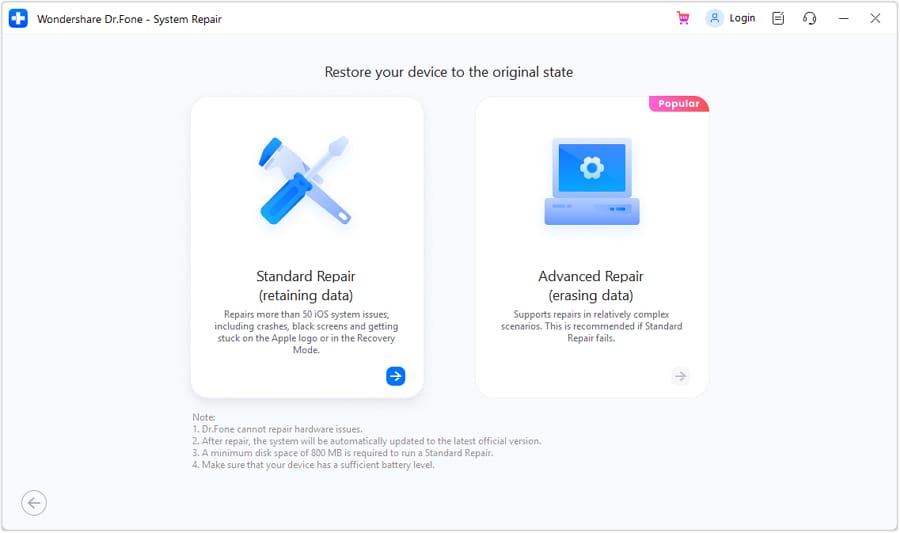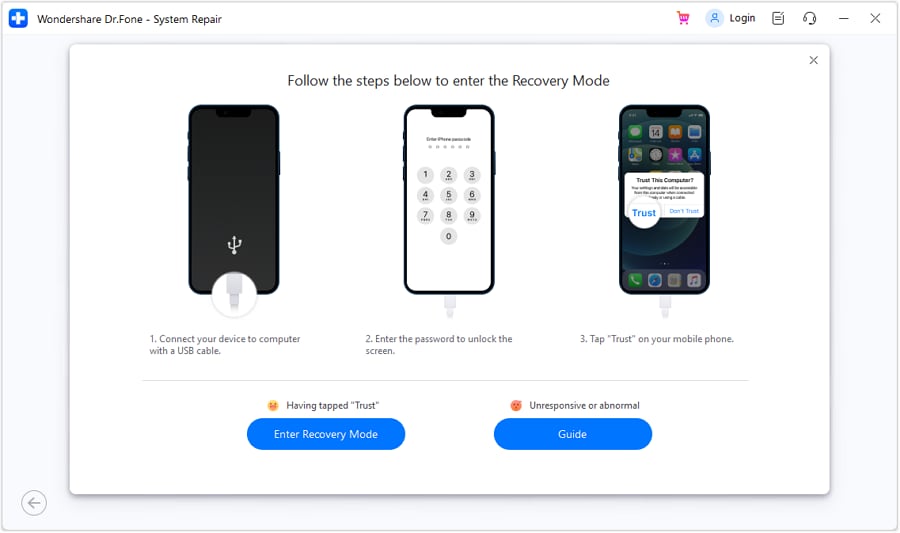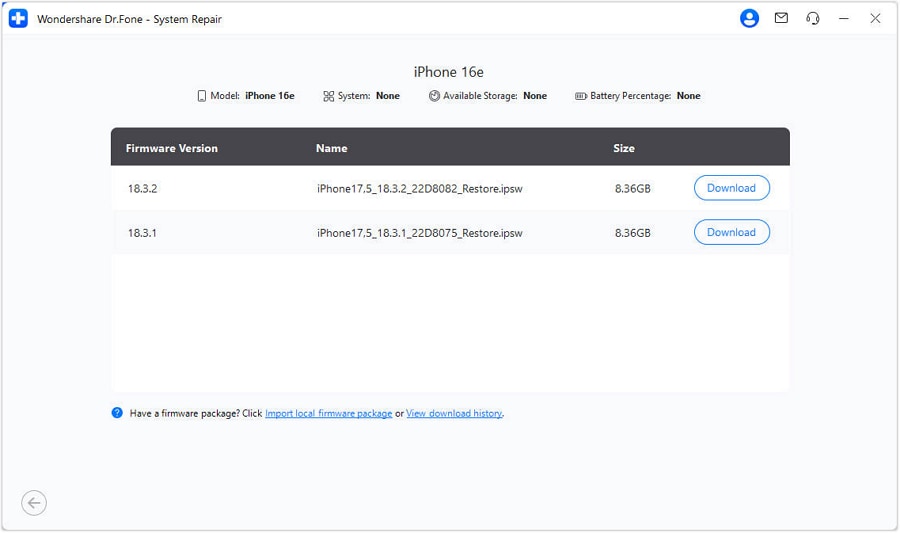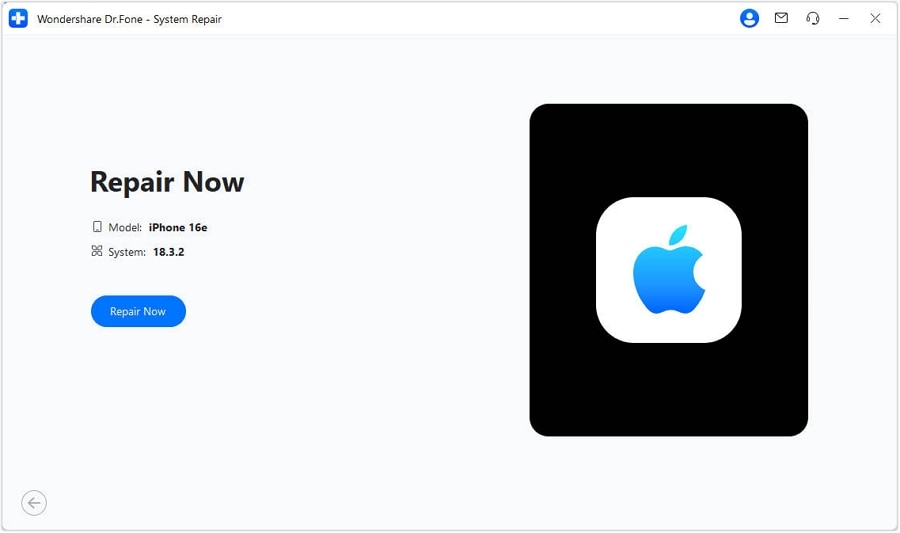Complete Tutorial on How to Change Text Color on iPhone
Oct 24, 2025 • Filed to: Device Data Management • Proven solutions
Dr.Fone Basic:
Better Control for Your Phone
Manage, transfer, back up, restore, and mirror your device

Have you ever confronted such problems that the default text color on your iPhone just doesn't cut it? Or have you also been troubled by the lack of options to personalize your device's appearance? Fear not, as you're not alone in this quest for customization! Personalizing your iPhone goes beyond choosing a wallpaper or a ringtone. Personalization is about making your device yours. One aspect of this is changing your iPhone text color, which can improve readability and accessibility for many users.
Changing your iPhone’s text color might seem daunting, especially if you're unfamiliar with all the settings and options. However, a few simple steps can give your device a new look and feel. Whether you want to make the text easier to read or add a personal touch, we've got you covered. In this tutorial, we'll show you how to change text color on your iPhone using different methods. Let's dive in!
- Can You Change the Text Color on iPhone?
- How to change text color on iPhone?
- What to Do When You Encounter System Issues After Changing Text Color?

- Step 1: Assuming your iPhone is already jailbroken, locate the Cydia app on your home screen and tap to launch it. Cydia is an alternative app store specifically designed for jailbroken devices.
- Step 2: Within Cydia, tap the "Search" tab at the bottom of the screen. Here, you can enter keywords to find relevant tweaks. For example, you can type "text color" or "font color" and browse the search results.
- Step 3: Popular options include ColorFonts or Eclipse. These tweaks offer various customization features, like changing your iPhone's text color. Carefully review the descriptions and user ratings before choosing a tweak. Once you've decided, tap on the desired tweak to view its details.
- Step 4: On the tweak's information page within Cydia, tap the "Install" button. A confirmation pop-up might appear, prompting you to confirm the installation. Tap "Confirm" to proceed. Cydia will then download and install the tweak. Follow any on-screen instructions that may be specific to the chosen tweak.
- Step 5: After successful installation, the tweak's settings should become accessible. Typically, you'll find them within the Settings app on your iPhone. Open the Settings app and look for a new section related to the installed tweak (e.g., "ColorFonts Settings" or "Eclipse Settings"). Within these settings, explore the options related to text color customization. You might find options to change the color of system text, app text, or even individual elements within specific apps.
- Step 6: After customizing your text color preferences, restart your iPhone. This ensures that the changes take full effect throughout your device's interface.
- Step 1: Locate the Settings app on your iPhone's home screen and tap to launch it. Settings is the central hub for configuring various aspects of your device.
- Step 2: Scroll down the Settings menu until you find the "Accessibility" option. Tap on "Accessibility" to proceed. Accessibility features are designed to assist users with visual, auditory, or mobility limitations.
- Step 3: Within the Accessibility settings, locate the option labeled "Display & Text Size." Tap on "Display & Text Size" to explore features that can affect how text appears on your screen.
- Step 4: Under the "Display & Text Size" menu, you'll find two options related to inverting the display colors: "Smart Invert" and "Classic Invert." These features can alter the appearance of your iPhone's interface.
- Step 5: Tap the toggle switch next to "Smart Invert" to activate it. This feature reverses the colors of most interface elements, except for images, videos, and certain app interfaces. In many apps, it can change text color to a darker background, improving text visibility for some users.
- Step 6: Tap the toggle switch next to "Classic Invert" to activate it. This feature inverts all colors on your display, including images, videos, and app interfaces. It's important to note that this feature can also change the text color. Yet, be aware that it might alter the look and feel of your device, which may affect the readability in some situations.
- Step 7: Try switching between Smart Invert and Classic Invert to see which option provides the best text appearance for your needs. These features are primarily designed to enhance accessibility for users with visual impairments. As a result, the text color changes might not be exactly what you were hoping for in terms of customization.
- Step 1: Identify the app where you want to change the text color. Locate the app icon on your home screen and tap to launch it. In this guide, we’ll use the Pages app.
- Step 2: Once within the app, find the section dedicated to settings or preferences. This might be represented by a gear icon, a menu button with three horizontal lines, or a label like "Settings" or "Preferences." The location of these settings can vary depending on the specific app. Tap the settings icon or menu to access the app's configuration options.
- Step 3: Within the app's settings, look for sections related to themes, display, or accessibility. These sections might hold options for customizing the app's visual appearance, potentially including text color.
- Step 4: Carefully examine the available options within the themes, display, or accessibility sections. If the app customizes text color, you might find a dedicated setting labeled "Text Color" or "Font Color." There could also be theme options that alter the overall color scheme, indirectly affecting text color.
- Step 5 (if available): If you find a dedicated text color setting, tap on it to reveal the color selection options. You might be presented with a color palette or a color picker tool. Choose the color you prefer for the app's text.
- Step 6 (if applicable): Any adjustments you make to the text color setting should be reflected immediately within the app. You can preview the changes and further refine your selection if needed.
- Ensure you have downloaded and installed Dr.Fone on your computer.
- Have your iPhone or iPad charging cable to connect your device to the computer.
- Back up your iPhone/iPad data regularly. While Dr.Fone's Standard Mode aims to maintain your data, creating a backup is always a good practice before making significant changes.
- Step 1: Open Dr.Fone on your computer. Once launched, locate the "Toolbox" section on the main interface, typically at the top left of the window. Click on "Toolbox" to reveal a list of available features. From the list of options, select "System Repair" to initiate the system repair process for your iPhone or iPad.
- Step 2: With Dr.Fone's System Repair selected, connect your iPhone or iPad to your computer using a compatible cable. Dr.Fone should automatically detect your device. A new window might appear, prompting you to choose the device type. Since you're working with an iPhone or iPad, select "iOS" from the options.
- Step 3: Dr.Fone will display a new set of options, choose iOS repair. Here, you'll be presented with two repair modes: "Standard Repair" and "Advanced Repair." Choose "Standard Repair" to fix your device's software issues while keeping your existing data intact.
- Step 4: Follow the on-screen instructions provided by Dr.Fone to put your iPhone or iPad into Recovery Mode. The steps for entering Recovery Mode can vary slightly depending on your device model and iOS version. Dr.Fone might offer a visual guide or text instructions to assist you. If you encounter difficulties or your device is unresponsive, click the "Guide" button within Dr.Fone for more detailed instructions on entering Recovery Mode specific to your device.
- Step 5: Once your device is in Recovery Mode, Dr.Fone will scan it and identify the most suitable iOS firmware version for repair. This firmware serves as the operating system that will be installed on your device. Verify the firmware version displayed and ensure it's compatible with your device. Once confirmed, click the "Download" button next to the firmware version to download it.
- Step 6: Dr.Fone will download the selected version. The download time can vary depending on your internet speed. Be patient and keep your device connected to your computer throughout the download and repair process.
- Step 7: After completing the firmware download, click the "Repair Now" button to begin the process. Dr.Fone will install the downloaded firmware onto your iPhone or iPad. This process might take some time, so avoid disconnecting or using your device. Dr.Fone will keep you updated on the progress.
- Step 8: Dr. Fone will notify you once the repair is finished. Click the "Done" button to exit the System Repair tool. Your iPhone or iPad should now be restarted and hopefully functioning normally again.
- iPhone News
- iPhone Activate
- iPhone Data Manage
- 1. Export Notes from iPhone to PC/Mac
- 2. iPhone Notes Duplicate
- 3. Print WhatsApp Messages on iPhone
- iPhone Diagnostics
- 1. Check iPhone Wi-Fi Speed
- 2. Check and Monitor iPhone Temprature
- 3. Put iPhone in Diagnostic Mode
- 4. Test iPhone Screens
- iPhone How-tos
- 1. Force Quit Frozen Apps
- 2. Find Own Phone Number
- 3. Find Blocked Numbers on iPhone
- 4. iPhone Internet Explorer Alternatives
- 5. Sync Thunderbird with iPhone
- 6. Things Can Do with iPhone on Plane
- 7. Tips for Using VLC for iPhone
- 8. iPhone Explorer for Mac and Windows
- 9. Use iPhone as Security Camera
- iPhone Location Tips
- 1. Change iPhone GPS Location
- 2. Hide iPhone/Android Location
- 3. PokeGo++ iPhone
- 4. Change Home Address on iPhone
- 5. See Someone's Location on iPhone
- 6. PGSharp for iPhone
- 7. Change App Store Country
- iPhone Track
- 1. Track iPhone by Phone Number
- 2. Track iPhone without App
- 3. Turn Off Tracking on iPhone
- 4. Spy on iPhone without Jailbreak
- iPhone Tricks
- 1. Unlink iPhones
- 2. Mirror iPhone/iPad to Windows PC
- 3. Turn On iPhone Without Home Button
- 4. Charge iPhone Without Charger
- 5. Free Unlimited Data on Verizon iPhone
- 6. Use iPhone with Broken Home Button
- 7. Use iPhone without Touch Screen
- 8. Remote Control iPhone from PC
- 9. iPhone Stuck on Apple Logo
- 10. DFU Tools for iPhone
- 11. iPhone/iTunes Error 4013
- 12. iPhone Front Camera Not Working
- 13. Download Songs on iPhone/iPod
- 14. Unlock iPhone without Passcode
- 15. Reset iPhone Without Apple ID
- 16. Transfer Photo from Android to iOS
- Find My iPhone Tips
Can You Change the Text Color on iPhone?
While iOS doesn't provide a built-in option to change iPhone text colors, this doesn't mean it's the end. There are several different methods by which you can achieve similar results. These methods may not alter the text color across all apps and interfaces, but they can be effective in specific contexts. With these options, you can enhance your iPhone text's readability and visual appeal.
How to change text color on iPhone?
To change iPhone text color, use these methods depending on your needs and preferences:
Change Text on iPhone using Cydia
Cydia is an alternative app store specifically designed for jailbroken iPhones. Since jailbreaking removes restrictions imposed by Apple, Cydia grants access to a wider range of tweaks and applications not available on the official App Store. These tweaks can change various aspects of your iPhone, including themes, app functionality, and, yes, even text color.



Change the iPhone’s Text Colors using the Accessibility Options
You can't directly customize the color of specific text on your iPhone. Yet, the Accessibility settings offer features that can affect how text looks by altering the display appearance. Here's a detailed guide:



Change the iPhone App’s Text Colors using App Settings
While there's no universal way to change text color across all iPhone apps, some apps offer built-in customization options within their settings. Here's how to explore these options and adjust text color within specific apps:



Note: Not all apps offer text color customization options within their settings. This guide provides a general approach, but the actual steps and available options will vary depending on the specific app you're using. If you can't find any text color customization settings within an app, it likely doesn't support this feature.
What to Do When You Encounter System Issues After Changing Text Color?
If you encounter system issues after jailbreaking your iPhone to change text color, don't panic. Jailbreaking can sometimes lead to conflicts and system instability. In such cases, you can use Wondershare Dr.Fone, a reliable software tool designed to recover and repair iOS systems, to resolve these issues. Dr.Fone's system repair feature can help fix problems caused by jailbreaking, restoring your iPhone to a stable state without losing your data.
Wondershare Dr.Fone is a comprehensive iOS system recovery tool that can help you fix various iOS issues, including those caused by changes to system settings such as text color. With Dr.Fone, you can easily repair your iPhone's system without losing data.
Before you begin:
Here's a step-by-step walkthrough:





Conclusion
While iOS doesn't natively support system-wide text color changes, workarounds are available. You can use Cydia, accessibility options, and app-specific settings to customize text colors. However, these methods can sometimes lead to system issues. If you encounter such problems, consider using Wondershare Dr.Fone. This tool can help recover and repair the iOS systems of those affected by jailbreaking. Dr.Fone offers a reliable solution to restore your iPhone's stability without losing data. Thus making it a valuable tool for resolving system issues.
Dr.Fone Basic:
Better Control for Your Phone
Manage, transfer, back up, restore, and mirror your device

















Daisy Raines
staff Editor